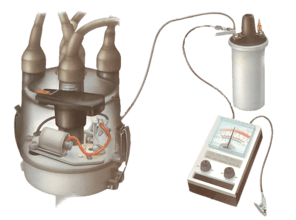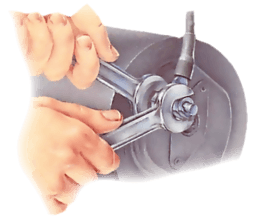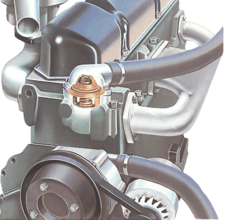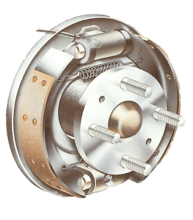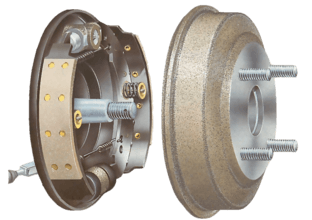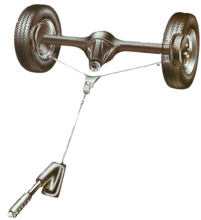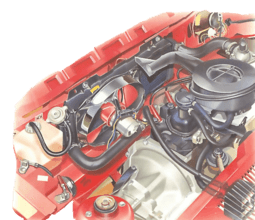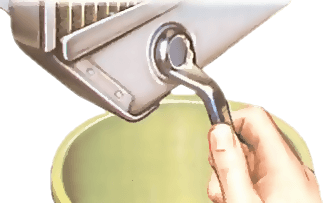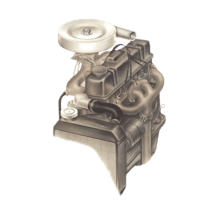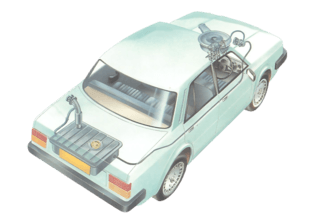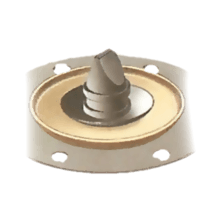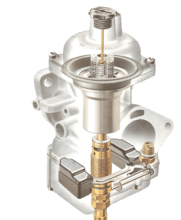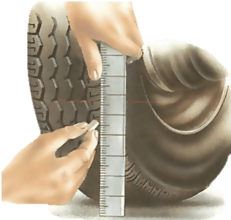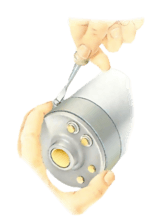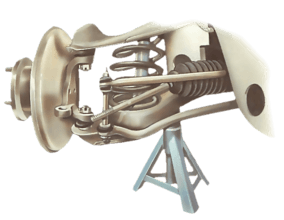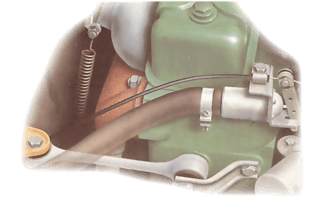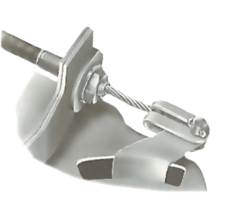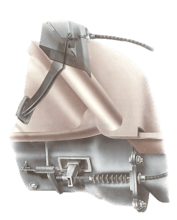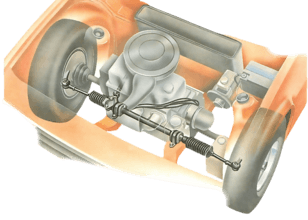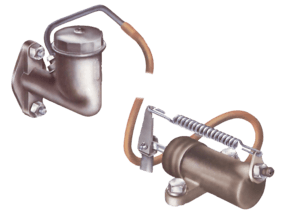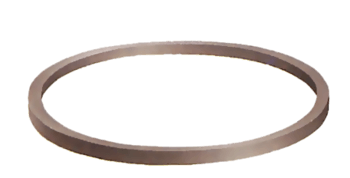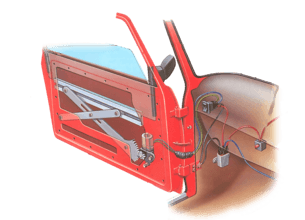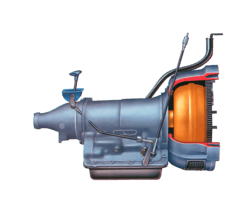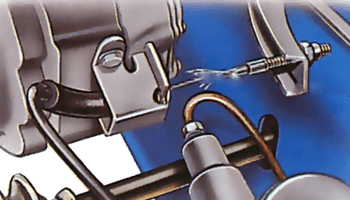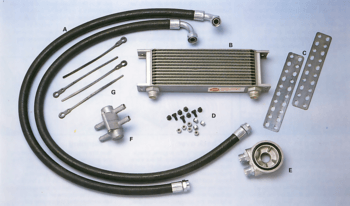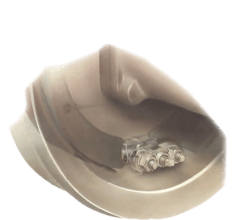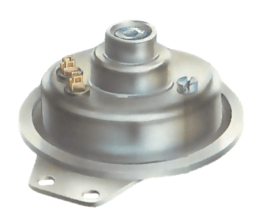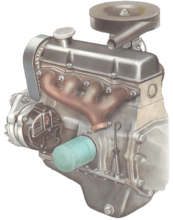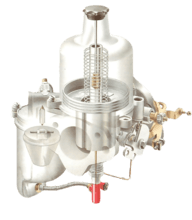Clés
Good spanners are forged from chrome vanadium. It is not worth buying cheap ones, which are likely to widen under pressure. If you want more than two or three ring or open-ended spanners, it is usually cheaper to buy a set, with probably five or eight spanners of metric, AF or BA sizes.
Most spanners are double ended, with consecutive sizes increasing mainly by 1mm or sixteenths of an inch(AF) at each end. Some spanners have one size duplicated on the spanner of the next consecutive size so that two nuts of the same size can be turned at the same time.
There is no clear distinction between a spanner and a wrench. Different tool catalogues may use either term for the same tool. The word wrench is also sometimes used to describe grips.

Open-ended spanner
Because it does not grip all round a nut, an open-ended spanner is likely to slip and round off the edges of a tight nut unless it is an exact fit.
Where possible, use a ring spanner to loosen a nut, then an open-ended spanner, which is faster to use, to undo it if the nut is still more than finger tight.

Combination spanner
A combination spanner has a ring at one end and is open-ended at the other. Both ends are the same size, so the ring end (Which may be slightly offset) can be used to loosen the nut and the spanner turned to undo the nut faster with the other open end.
Because only one size is covered in each spanner, a set of combination spanners is relatively more expensive than a set of individual ring or open-ended spanners.

Adjustable spanner
An adjustable spanner is open ended, with one movable jaw that can be screwed in or out to fit a number of nut sizes. Use it only if the correct ring or open-ended spanner is not available.
Buy one that gives a wider opening than your largest ring or open-ended spanner. A 300mm crescent-shaped spanner is likely to have a maximum opening of 34mm. Make sure the jaws fit well together, with no free play or any tendency to rock or back off when pressure is applied.
Unless properly fitted on a nut, the spanner may be strained, or slip and round off the nut edges. Fit the spanner jaws as far on to the nut as possible, and position it so that the main pressure is exerted on the fixed jaw.
A wrench (also called a spanner) is a tool used to provide grip and mechanical advantage in applying torque to turn objects—usually rotary fasteners, such as nuts and bolts—or keep them from turning.
In British English, spanner is the standard term. The most common shapes are called open-ended spanner and ring spanner. The term wrench is generally used for tools that turn non-fastening devices (e.g. tap wrench and pipe wrench), or may be used for a monkey wrench - an adjustable spanner.
In American English, wrench is the standard term. The most common shapes are called open-end wrench and box-end wrench. In American English, spanner refers to a specialized wrench with a series of pins or tabs around the circumference. (These pins or tabs fit into the holes or notches cut into the object to be turned.) In American commerce, such a wrench may be called a spanner wrench to distinguish it from the British sense of spanner.
Higher quality wrenches are typically made from chromium-vanadium alloy tool steels and are often drop-forged. They are frequently chrome-plated to resist corrosion and ease cleaning.
Hinged tools, such as pliers or tongs, are not generally considered wrenches in English, but exceptions are the plumber wrench (pipe wrench in British English) and Mole wrench (sometimes Mole grips in British English).
Read more on Wikipedia
Cet outil est utilisé dans
Lors de la pose de nouveaux points de contact dans le distributeur, la façon normale de vérificat...
If testing the starter circuit (See Checking the starter circuit) indicates a fault in the starte...
If the engine warms up very slowly, or never reaches normal temperature, or if it overheats quick...
Brake fluid is generally renewed when a leaking or sticking wheel cylinder on a drum brake is re...
Check drum brakes at least every six months, 6,000 miles or 10,000 km, or as recommended in the ...
Handbrake cable layouts vary from car to car, but have only a limited range of types of componen...
In a fully sealed cooling system, the cap on top of the radiator is not usually opened for toppin...
Radiators on earlier cars were made of copper and brass alloys. They could be repaired by solderi...
Removing the cylinder head is straightforward on pushrod engines, but more complicated on overhea...
Any fuel leak, however small, can cause a fire. Do not drive a car with a suspected leak until yo...
If a car stops and has not run out of petrol, check whether there is petrol in the carburettor....
The Stromberg carburettor does not have a regular service schedule, but should be cleaned about ...
Les roues avant mal alignées peuvent provoquer une usure inégale des pneus et peuvent sérieuseme...
Both inertia and pre-engaged starters can have one of two types of commutator. It may be a cylin...
If a check of the rack gaiters reveals that the rubber is starting to crack, split or perish, rep...
Engines prone to rock on their rubber mountings, particularly at idling speeds, have extra damper...
The clutch cable has a steel-wire inner core sliding inside an outer sheath. It should last at l...
Pour travailler efficacement, l'embrayage a besoin de la bonne quantité de jeu dans la liaison e...
Most modern cars have rack-and-pinion steering gear, mounted across the car. Usually the rack ho...
Beaucoup de voitures ont des embrayages qui fonctionnent hydrauliquement. Le mécanisme qui les e...
There are two main types of oil seal: static and dynamic. A static oil seal fits between two non...
Electric windows are being fitted to more and more cars as standard equipment, while conversion k...
The front wheels on most cars are not set exactly parallel. Instead they point slightly in or sl...
Although they are considerably more complicated than manual gearboxes, with control and operating...
If your car has a cable-operated clutch and you find that the gears are difficult to engage, the...
The oil in your engine needs to be kept at an optimum temperature so it can still carry heat...
A typical braking system uses disc brakes at the front of the car and drum brakes at the rear....
Les voitures sont généralement équipés d'une haute fréquence (HF) ou d'une corne comme équipemen...
Check the engine oil level weekly more often if the engine is consuming some oil, and always bef...
The SU carburettor is simple to strip. It has only one jet (except in a few special types) and...

